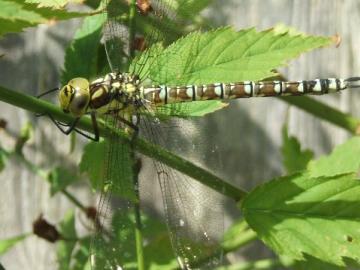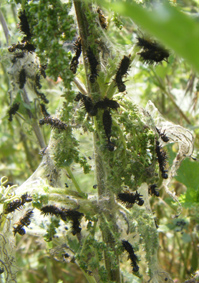It certainly looks like it but not my group - best to email the County Recorder for Odonata Ted Benton (see county recorder page County Recorders)
Your Forum
This forum has now been more or less replaced by the Club's Facebook page at
The weblog below is for naturalists to use to report interesting sightings, ask questions, report on field meetings and generally post pictures and any information or questions generally relevant in some way to the wildlife and geology of Essex. You will need to register and be logged-on to post to the forum, and you need to upload pictures first, for use in posts. Find out more
The weblog below is for naturalists to use to report interesting sightings, ask questions, report on field meetings and generally post pictures and any information or questions generally relevant in some way to the wildlife and geology of Essex. You will need to register and be logged-on to post to the forum, and you need to upload pictures first, for use in posts. Find out more
|
Mon 13th July 2009 11:27 by Iona Stone southern aeshna (cyanea)? Wed 8th July 2009 19:39 by Peter Harvey Caterpillar massacre
I agree it seems the most likely explanation that the caterpillars have shed their skins and these are what the photograph shows. British ladybird larvae certainly wouldn't cause this kind of damage or prey on caterpillars, and I would have thought it very unlikely harlequin ladybirds or their larvae could attack large caterpillars, even if other food sources are used up. Wed 8th July 2009 12:56 by Grant Maton Caterpillar massacre
Hi Martyn
I might be wrong but the photo looks to me like they have shed their skins as they've grown and what you are seeing is the old skins. Maybe somebody else could comment?
Grant Wed 8th July 2009 12:53 by Grant Maton Humming-bird Hawk-moth siting
I have just seen my first Humming-bird Hawk-moth in my Mum's garden in Rochford Essex. When on holiday in Greece and Spain we see large numbers of these day flying moths, but this is the first for three years in Essex. Anybody else seen them?
Grant Maton Corporate Communications Officer Essex Wildlife Trust 07887 763 678 ewt@gmaton.com Mon 6th July 2009 19:27 by Martyn Everett Caterpillar massacre
I have had several large colonies of peacock butterfly caterpillars on my allotment this summer, but at least two of the colonies (one only a handful the other about 30+) have been attacked by something leaving behind a mass of broken corpses that look as though they have been sucked dry in parts. In both instances there have been several ladybird larvae on the same patch of nettles - could they be causing this? Here is a photo of the damage:
|
Archives: May 2020Aug 2019 Jan 2019 Sep 2018 Jul 2016 Oct 2015 Jul 2015 May 2015 Apr 2015 Mar 2015 Feb 2015 Jan 2015 Dec 2014 Oct 2014 Sep 2014 Aug 2014 Jul 2014 May 2014 Apr 2014 Mar 2014 Feb 2014 Jan 2014 Dec 2013 Nov 2013 Sep 2013 Aug 2013 Jul 2013 Jun 2013 May 2013 Apr 2013 Mar 2013 Feb 2013 Jan 2013 Dec 2012 Nov 2012 Oct 2012 Sep 2012 Aug 2012 Jul 2012 Jun 2012 May 2012 Apr 2012 Mar 2012 Feb 2012 Jan 2012 Dec 2011 Nov 2011 Oct 2011 Sep 2011 Aug 2011 Jul 2011 Jun 2011 May 2011 Apr 2011 Mar 2011 Feb 2011 Jan 2011 Dec 2010 Nov 2010 Oct 2010 Sep 2010 Aug 2010 Jul 2010 Jun 2010 May 2010 Apr 2010 Mar 2010 Feb 2010 Nov 2009 Oct 2009 Aug 2009 Jul 2009 Jun 2009 May 2009 Apr 2009 Mar 2009 Feb 2009 Jan 2009 Nov 2008 Oct 2008 Sep 2008 Aug 2008 Jul 2008 Jun 2008 May 2008 Apr 2008 Mar 2008 Feb 2008 Jan 2008 Dec 2007 Nov 2007 current posts |



















